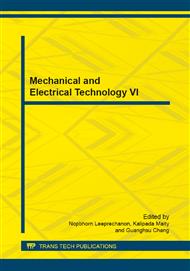p.78
p.83
p.89
p.94
p.99
p.105
p.110
p.115
p.121
Thermodynamic Analysis of Hydrogen Production from Methanol Reforming in Supercritical Water
Abstract:
The hydrogen production via methanol reforming in supercritical water (SCW) condition has been thermodynamically investigated by a Gibbs free energy minimization method to determine equilibrium yields and energy requirements in fuel processor over the temperature range between 673 and 1273 K and water-to-methanol (H2O:MeOH) ratio of 1 – 5 corresponding to the methanol concentration from 64 to 26 wt%, respectively. In this research, the main objective is to compare the influence of operating pressure from atmospheric (ATM) pressure to SCW condition on the product yields. At ATM pressure, a hydrogen production increases with increasing reaction temperature up to 973 K while under SCW condition, an increase of temperature constantly increases the formation of hydrogen. As the reaction temperature increases, the hydrogen production and the total heat load increase but the hydrogen to carbon monoxide (H2/CO) ratio decreases. Although the hydrogen yield is constantly higher at ATM pressure than under SCW condition, the H2/CO ratios are always greater in SCW at temperatures above approximately 700 K. The amount of hydrogen and the heat load of both the preheater and the reactor also increase significantly as the H2O:MeOH ratio increases.
Info:
Periodical:
Pages:
99-104
Citation:
Online since:
August 2014
Authors:
Keywords:
Price:
Сopyright:
© 2014 Trans Tech Publications Ltd. All Rights Reserved
Share:
Citation:


